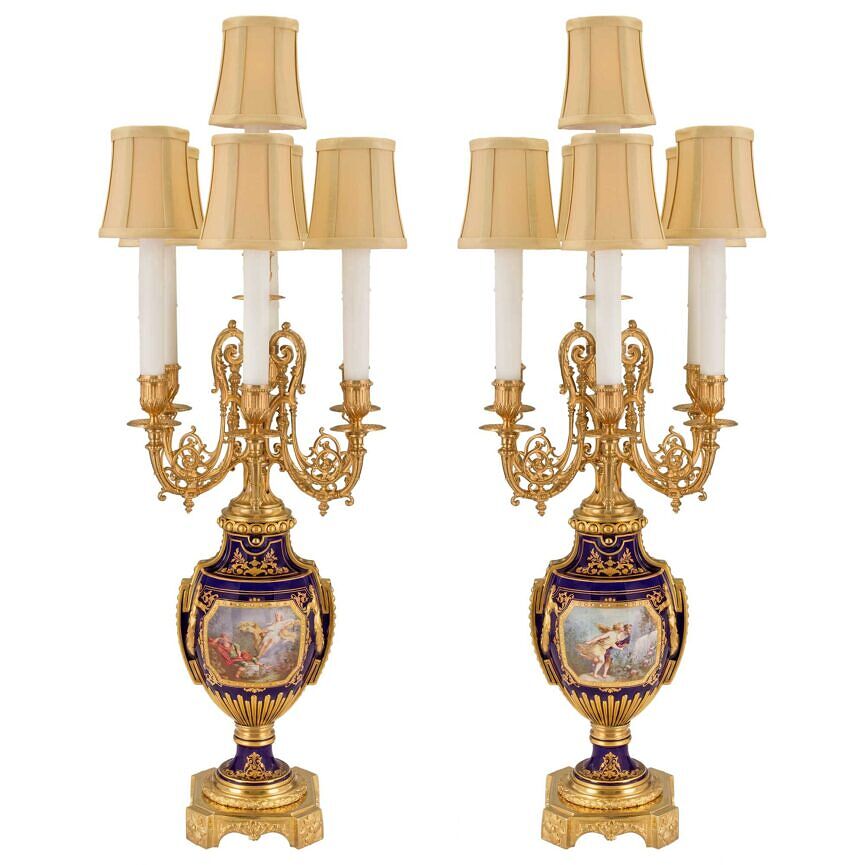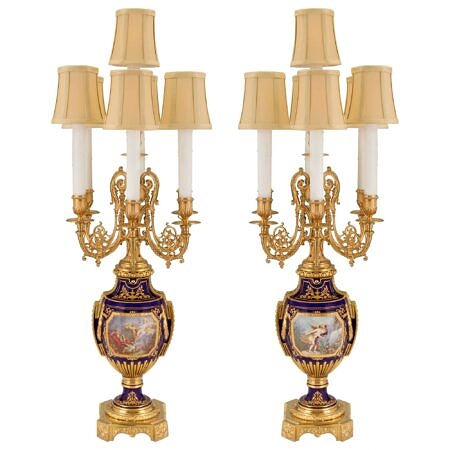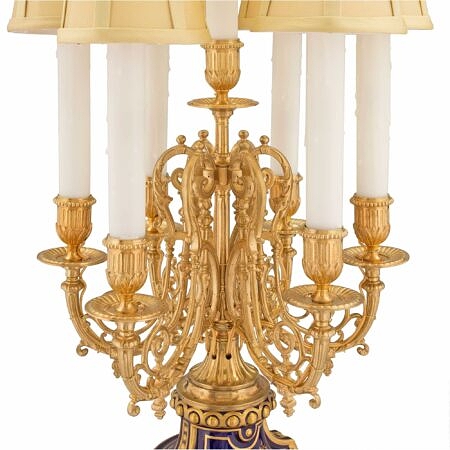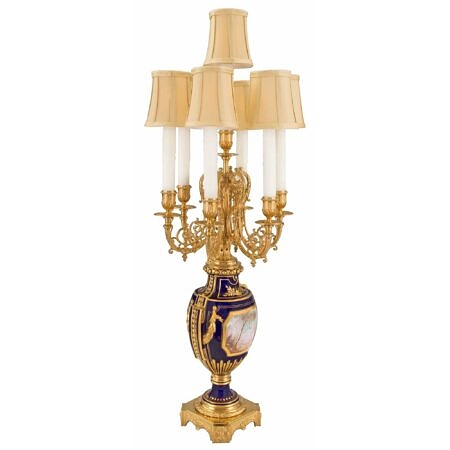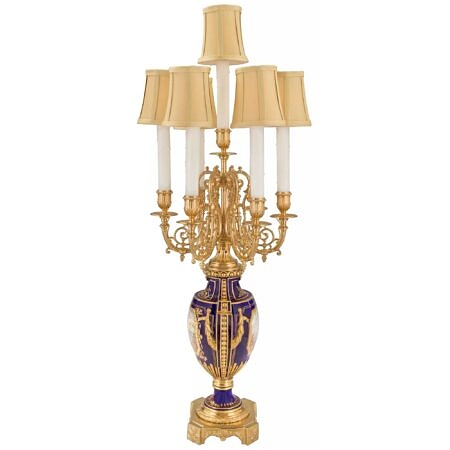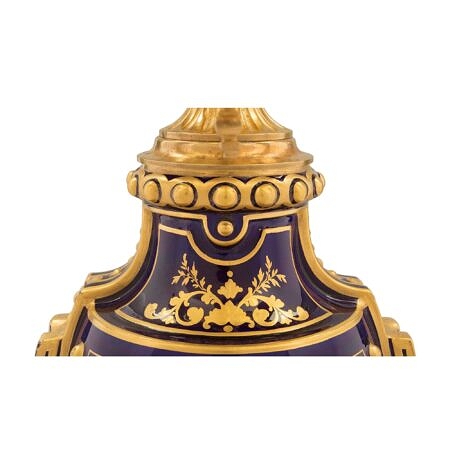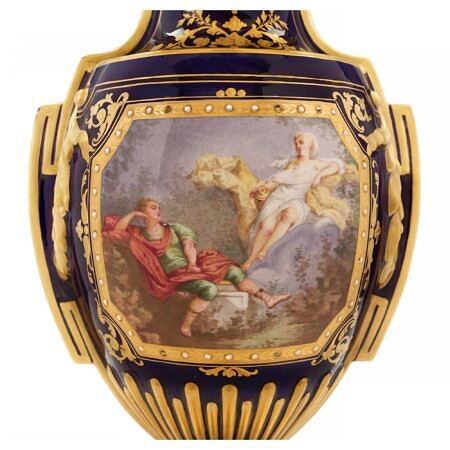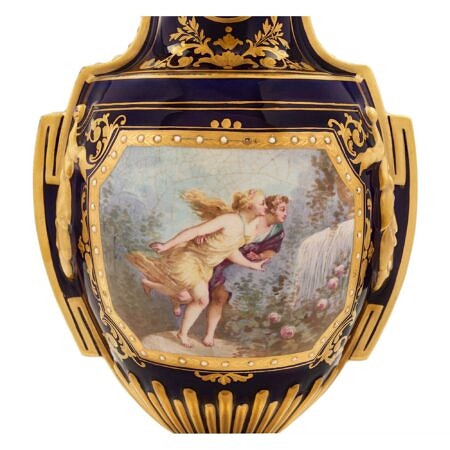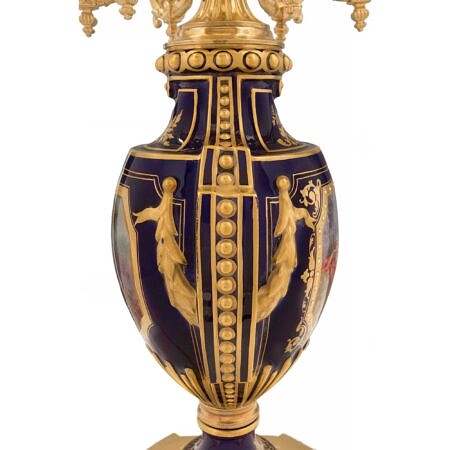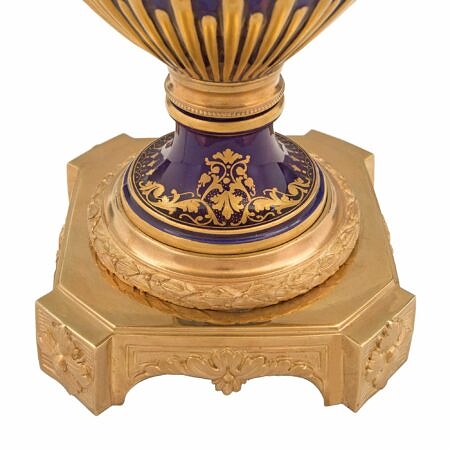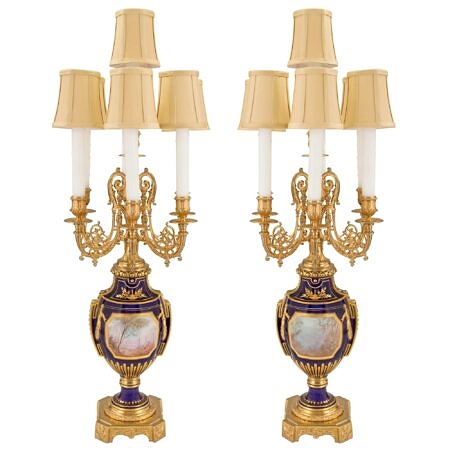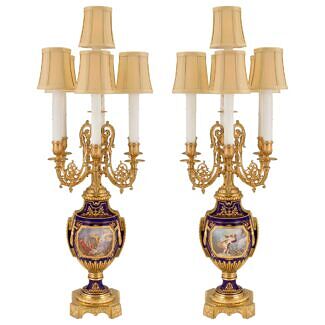A pair of French 19th century Louis XVI st. Sèvres porcelain and ormolu candelabra lamps
List: $17,800.00
An exceptional pair of French 19th century Louis XVI st. Sèvres porcelain and ormolu seven arm candelabra lamps. Each lamp is raised by a richly chased ormolu square base with cut corners and fine block rosette feet centered by a... — Read More
An exceptional pair of French 19th century Louis XVI st. Sèvres porcelain and ormolu seven arm candelabra lamps. Each lamp is raised by a richly chased ormolu square base with cut corners and fine block rosette feet centered by a beautiful foliate reserve. At the mottled socle pedestal is a detailed wrap around berried laurel band. The cobalt blue Sèvres Porcelain body displays striking and most charming scenes with personages in beautiful forests framed within a gilt border. Leading up each side is a gilt beaded design and lovely hand painted gold flowers at the neck. Above are six elegant scrolled arms with richly chased foliate movements adorned with large acanthus leaves, ending with fine foliate candle cups, all centered by a taller central arm.
*Shades shown for display purposes only. — Read Less
All light fixtures have been inspected and rewired to US standards.
- Item # 10560
-
H: 33.75 in L: 12 in D: 12 in
H: 86 cm L: 30 cm D: 30 cm
- Shade Diameter: 4 in
- France
- 19th Century
- Ormolu, Porcelain
- Louis XVI st. Read More
- Sèvres Read More
It was founded through the support of King Louis XV of France and at the initiative of Madame Pompadour to be located near her Château.
Due to Sèvres’ reputation for excellence and prestige, it has always attracted some of the best artists throughout history; François Boucher, Albert-Ernest Carrier-Belleuse, Étienne Maurice Falconet, Alexandre Fragonard and August Rodin, just to name a few. Many of these artworks can be seen at the Louvre Museum and the Musée National de Céramique in France.
Initially, Sèvres created a soft paste porcelain know as Biscuit de Sèvres. In 1768 the Bordeaux chemist Villaris and Jean Baptiste Darnet discovered deposits of Kaolin on French soil. In 1771 the Royal Academy sent a report on the creation of hard paste porcelain at which time Sèvres began manufacturing hard paste porcelain.
Louis-Simon Boizot (1743–1809) was a French sculptor renowned for creating Biscuit de Sèvres models, and was the director at Sèvres from 1774-1800, followed by Alexandre Brogniart(1800-1847) and Henri Victor Regnault in 1854.


